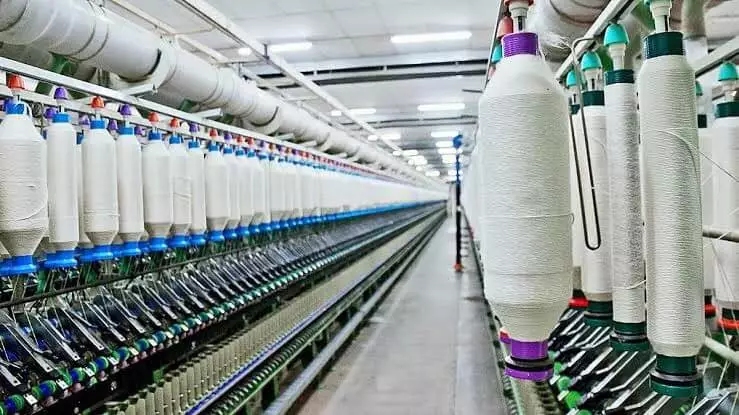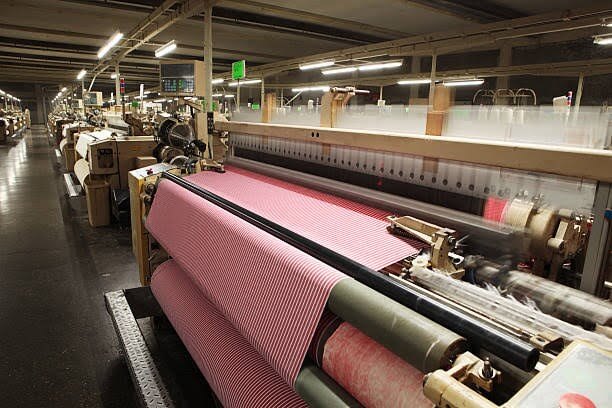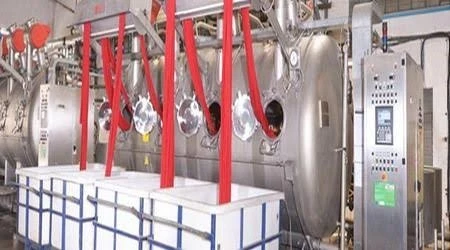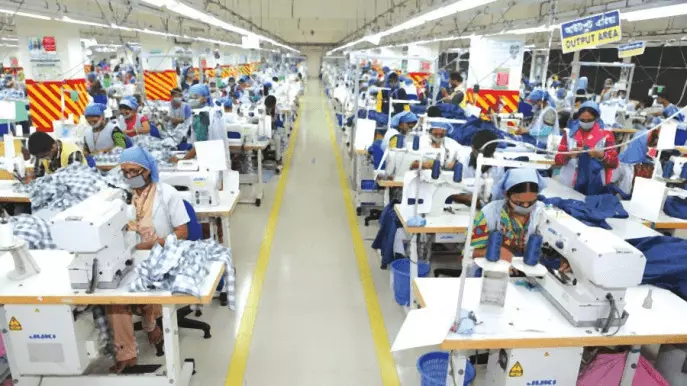What is the Textile Industry: Definition, Meaning, Processes, Types
Introduction
Initially, before going into the depth of the textile industry, let’s first understand the basic meaning of textiles. The simple meaning of Textile is woven or knitted fabric made from yarn. But not only from fiber, yarn, and fabric or any other product category made from these combinations are defined Textiles. Garment manufacturing is also connected with the textiles. The basic raw material of textiles is fiber, which may be natural or man-made. Here I present details on the Textile Industry Definition, Meaning, Processes, and Types description.
What is the Textile Industry?
The industry that includes sections like research, design, development, manufacturing, and distribution of textiles, fabrics, and clothing is known as the textile industry. In per past, the revolution of industries, fabrics, and clothing were manufactured in the home by man for personal use. To make some profit from it, sometimes they were also resale on a small scale from a business point of view. With the invention of the flying shuttle, the Textile industry was initiated in 1733, the spinning jenny in 1764, and the power loom technology in 1784. After that because of the revolution in technologies, fabrics and clothing began to be mass-produced for the public. The major contribution to the success of the textile industry is from James Watt who improved the steam engine in 1775, Eli Whitney’s cotton gin in 1792, and Elias Howe’s invented sewing machine in 1846.
Currently, the textile industry is a global situation that consists of every business engaged in the creation, production, manufacturing, and distribution of textiles. Nowadays, it has also become a very complex industry. It initiated agriculture regarding fiber production, husbandry of sheep and silkworms, and mining of various metals and minerals. Then these fibers are manufactured into varieties of yarns, fabrics, and apparel. This also comprises spinning mills, weaving mills, knitting mills, dyeing mills, and garments. In addition, it also involves various trims and accessories like companies that sell buttons, zippers, knitting supplies, sewing machines, Yarn and threads, laces, looms, drapery hardware, etc.
What are the 4 Main Processes of the Textile Industry?
1. Spinning (Yarn Manufacturing)
The spinning process is defined as the conversion of fiber (natural or man-made) into yarn. There are many subsequent processes in the spinning department such as blow room, carding, drawing, combing, simplex, and ring frame. The spinning process initiates with the Blow room. The key function of this process is to turn the cotton bale into a uniform lap of a particular length by carrying out various activities such as opening, cleaning, blending, or mixing. The next step in the sequence is carding. The specialty of the carding is that it is called the heart of spinning.

The next step is drawing. Here, basically, the slivers are blended, doubled, leveled, and drafted. The fourth step is a combing process. It simply involves the straightening as well as parallelizing fibers and also the removal of short fiber, impurities, etc. The simplex process is the next step in the sequence. Here slivers are reduced and also given a small amount of twist. Then the slivers are turned into roving. The last step in this department is the ring frame. Here, simply the roving, on bobbins, is placed in the ring frame, where it passes through several sets of rollers which are usually running at higher rates of speed, and is finally drawn out to yarn.
2. Fabric Manufacturing
For fabric manufacturing, there are various methods. Out of that, the most used are weaving and knitting. The popular method of fabric manufacturing is weaving. Basically, a spinning process developed when people analyzed that the raw materials could be improved before they were woven. In the meantime, rude looms were created, which were very simple and normally hand-operated. In today’s world, varieties of modern looms have been developed and come into existence but essentially perform the same operation as the simple hand-operated loom.

Similar to spinning, the weaving department also has different processes like winding, warping, sizing, and looming. After weaving, Knitting is the second most widely used method of fabric manufacturing. In recent years, the popularity of knitting has grown huge due to the increased versatility of techniques, the inventions of many new man-made fibers, and the growth of consumer demand and supply. Today the application of knitted fabrics varies from hosiery, underwear, sweaters, slacks, suits, and coats.
3. Wet Processing

The department that does desizing, scouring, bleaching, washing, mercerizing, dyeing, etc. is known as wet processing. Desizing is the process of removing the sizing components. Using alkali, scouring is used to remove fats, oil, and wax. To get rid of the fibers’ original color, bleaching is used. Washing is used to clean textile materials, mercerizing is used to make them even more brilliant, and dying is used to give them a single, consistent color. The wet processing section makes use of a variety of devices, including kier boilers, J-boxes, jets, Jiggers, Pad Mangles, and Winch Dyeing devices.
4. Garments Manufacturing
The manufacturing steps and techniques that are involved in the production of garments on a large scale on an industrial basis for business purposes are called garments manufacturing technology. Basically, the garment factories are divided into three categories woven garments factory, knit garments factory, and sweater garments factory. A woven garments factory produces garments from woven fabrics whereas, a factory manufacturing garments from knit fabrics is called the knit garments factory. To manufacture garments we required different types of sewing machines for different specific types of stitches.

As it is a fact that, the major part of this textile industry involves garment and apparel manufacturing, many people are employed designing new fashions and marketing them for production. Even, various other textile companies manufacture sheets, blankets, pillowcases, and towels. Apart from this, importing and exporting fabrics, and garments are also a big part of the textile industry.
3. Types of the Textile Industry
It comprises a wide variety of activities, from the production of raw materials to the manufacturing of finished goods. Simply, the textile industry is classified into three main categories:
- Apparel textiles
- Home Furnishings/ Textile
- Industrial textiles
A. Apparel Textiles
The most prominent and well-known textile products are apparel and clothing. They include vast varieties of clothing, footwear, and accessories such as sunglasses, jewelry, and gloves. Nowadays, due to various developments and enhancement apparel textiles can be made from various kinds of materials, which includes natural fibers like cotton, wool, and silk, as well as synthetic fibers like polyester and nylon. In today’s world, the apparel textile industry is found to be a very large and competitive market, with many brands competing for consumer attention. Texongo is one of the brands, that offers a variety of sustainable and environmentally-friendly clothing alternatives.
B. Home Furnishings
The fabrics and materials which are particularly used to decorate homes and interiors are known as home furnishing textiles. This can be comprised of curtains, upholstery, bedding, and towels. To manufacture home furnishing textiles it requires materials like cotton, silk, wool, and synthetic fibers. The home furnishings textile industry is also found to be highly competitive in nature, with many different brands offering unique and stylish alternatives for consumers. Texongo also provides a huge variety of sustainable home furnishing options, for example, bed sheets and towels made from organic cotton.
C. Industrial Textiles
The textiles that are used for industrial purposes, such as in the automotive, construction, and medical industries and many more are known as industrial textiles. Industrial textiles can be manufactured from different kinds of materials, such as synthetic fibers like polyester and nylon, as well as natural fibers like cotton and wool. Industrial textiles are more applications-oriented, which are often specialized such as fire-resistant fabrics for the aviation industry or medical textiles for use in surgical procedures or for medical industry, etc.
Importance of Textile Industry
Humans require food, shelter, and warmth and textiles fall in all of these things to survive. Farmers can use fertilizers, herbicides, or insecticides to boost crop yields thanks to clothes and safety equipment. For planting, harvesting, and crop protection, they can also utilize equipment filters and shields. Food production would be less dependable without all of these technical textiles. Many nations throughout the world benefit economically from textile production. A textile industry’s growth or decline can have a significant impact on an economy, which in turn can have an impact on people’s ability to support and provide for their families. The textile sector plays a significant role in providing employment and financial support to developing nations like Bangladesh, Cambodia, Sri Lanka, China, India, and Pakistan, which also export many types of textiles.
Although the manufacture of textiles can lead to pollution, the industry is attempting to lessen this impact and is assisting other sectors in doing the same. In order to turn waste materials like coconut shells, soybean shells, and seaweed into useful products rather than being thrown away, textile factories are now employing them to make apparel. Optical fibers used in computers and lighting are made from textile fibers, as are computer chips and filaments. This market can only expand in our society, which is experiencing tremendous technological improvement.
Conclusion
The specialty of the textile industry is that it belongs to the people’s livelihood industry and is also one of the light industries; textiles are not only daily necessities, but also are basic materials or accessories that other industries need to apply more or less, even it is one of the evidence of history and culture. The textile industry is a varied and multifaceted industry that consists of a wide range of products and applications. The three important classifications of the textile industry are apparel, home furnishings, and industrial textiles. Many brands have evolved that offer sustainable and environmentally-friendly textile options in both the apparel and home furnishing sections, reflecting the growing demand for eco-friendly products in the textile industry.
6. References
- WHAT ARE THE 3 CATEGORIES OF THE TEXTILE INDUSTRY?, by Aman Gupta
- https://texongo.com/blogs/news/what-are-the-3-categories-of-the-textile-industry
- What is the Textile Industry?
- https://www.market-prospects.com/articles/textile-industry
- What is the Textile Industry? Definition and Meaning, by Abu Sayed, November 5, 2015
- https://textileapex.com/what-is-textile-industry-definition-and-meaning/
- 4. https://study.com/academy/lesson/textile-industry-significance-advantages.html
- 5. Machin processes“, Spinning the Web, Manchester City Council: Libraries, archived from the original on 2008-10-23, retrieved 2009-01-29
- 6. Majeed, A (January 19, 2009), Cotton and textiles — the challenges ahead, Dawn-the Internet edition, archived from the original on January 23, 2009, retrieved 2009-02-12
- You may love to read: SWOT Analysis of Bangladesh Textile Industry
- Top 6 Spinning Machinery Manufacturers for Textile Industry
- Overview of the Global Textile Industry
